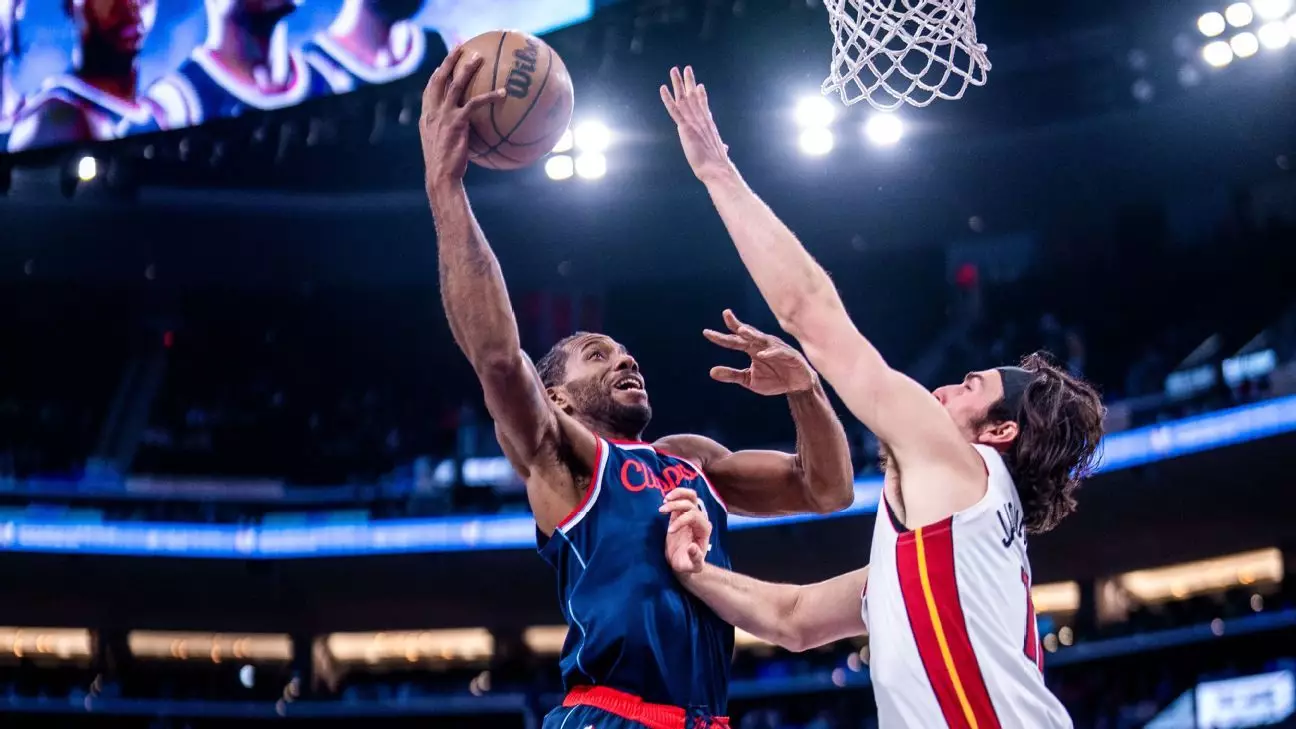Kawhi Leonard’s return to the court has generated a mix of excitement and cautious optimism among fans and analysts alike. The LA Clippers superstar has come back from a lengthy rehabilitation process for his surgically repaired knee. However, Leonard remains firmly committed to a measured approach as he navigates this new phase in his career. He recently stated, “I’m taking my time,” emphasizing the importance of pacing himself to ensure a sustainable comeback. His reluctance to rush back into full-time play highlights his experience and understanding of the long-term implications of quick fixes, especially considering his previous battles with injuries.
In his recent appearance during the Clippers’ 109-98 win against the Miami Heat, Leonard managed six points and five rebounds in just 21 minutes. While these statistics may not evoke memories of MVP performances, they illustrate his gradual reintegration into the team. Leonard acknowledged the team effort that led to their victory, stating, “Happy we got the win. Good team win.” The Clippers now sit sixth in the Western Conference with a record of 21-17, demonstrating that the team has been able to maintain competitive play even with his limited minutes.
James Harden, one of Leonard’s teammates, has provided insight into the adjustment period that Leonard is currently undergoing. He commented, “He’s just working his way into conditioning-wise, playing-wise, flow of the game,” noting the lack of training camp or preseason opportunities for Leonard. This transition phase is not only about physical conditioning but also about developing a rhythm within a team that has already established a style of play without him.
Totaling only 26 points and 10 rebounds over three games, Leonard has yet to demonstrate the explosive output that many fans anticipate. However, the goals set by both Leonard and his teammates focus on gradual improvement. Ivica Zubac, the team’s center, expressed confidence in Leonard’s potential performance once he regains his form, saying, “When he gets his legs under him and rhythm, he’s going to be really good.” This sentiment underscores a collective belief that Leonard’s role will evolve as his physical conditioning improves.
Leonard’s commitment to laser-focused preparation and his capacity to read his body’s signals is commendable. He acknowledged that as long as he feels good on the court and can maneuver effectively, he remains on the right track. Such an attitude invites a broader conversation about athlete management and recovery, especially in a high-stakes environment where performance pressure can be overwhelming.
In addition to basketball, Leonard’s recent decision to step away from the team for family commitments amid wildfires in Los Angeles illustrates his priorities. The wellbeing of his loved ones took precedence, showcasing a side of professional athletes often overshadowed by competitive narratives. His acknowledgment of the ongoing challenges faced by others amid the natural disaster adds a layer of humanity to the ongoing sports story.
While Leonard’s statistical contributions may appear modest at this point, the narrative around his comeback is rich with complexity. By approaching this recovery with patience and focusing on true incremental benefits rather than immediate outcomes, Leonard sets himself, his team, and his fans up for a potentially rewarding journey ahead. The Clippers and their supporters eagerly await the resurgence of a player known for his incredible talent and clutch performances.

